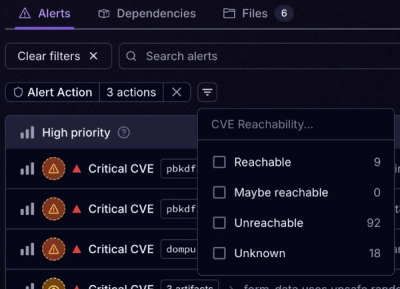
Product
Announcing Socket Fix 2.0
Socket Fix 2.0 brings targeted CVE remediation, smarter upgrade planning, and broader ecosystem support to help developers get to zero alerts.
Eriksen is a model factory that makes it easy to write model code that retrieves or saves data to multiple, configurable places. It's main job is to Marshal reads & writes to a configurable and swappable backend, allowing for a separation that preserves an interface even when the backend data storage system changes.
npm i eriksen
Eriksen is useful when you're writing code that may change database backends, or if you're currently changing code to move from one backend to another. Since it concerns itself with only the db interactions from your code, it allows your data access code to be more modularized within a codebase. And since Eriksen acts as the coding interface, you should not need to change any other code unless expectations change as db backends switch in or out.
Because Eriksen sits between the code that accesses a backend storage system, this allows for Eriksen to log failures for a non-primary backend in the background.
This example creates two models in different databases and configures eriksen to use cassandra as the primary and dynamodb as the secondary. It calls the getAllOfTheThings method with cassandra as the primary, meaning if the getAllOfTheThings fails in dynamo, it just logs out the errors, does not fail the call. If the primary fails it will throw an error.
// cassandra model
const cassandraMapper = {
getAllOfTheThings: (name) => {
return cassandra.query("SELECT ...");
}
}
// dynamo model
const dynamoMapper = {
getAllOfTheThings: (name) => {
return aws.dynamodb.DocumentClient(...);
}
}
const Eriksen = require('eriksen');
const model = new Eriksen('allThings');
model.addModel('cassandra', cassandraMapper);
model.addModel('dynamodb', dynamoMapper);
model.configure({
primary: cassandraMapper,
secondary: dynamoMapper
});
function retrieveAllOfTheThings(thingName) {
return model.proxy.getAllOfTheThings(name);
}
// calling function that calls the eriksen instance to marshall calls
retrieveAllOfTheThings('allMyThings')
.then((things) => {
console.log('list of my things', things);
})
.catch((err) => {
console.log(`it failed ${err.message}`);
});
FAQs
A model-marshalling library for dual-write/single-read data migrations
We found that eriksen demonstrated a not healthy version release cadence and project activity because the last version was released a year ago. It has 1 open source maintainer collaborating on the project.
Did you know?

Socket for GitHub automatically highlights issues in each pull request and monitors the health of all your open source dependencies. Discover the contents of your packages and block harmful activity before you install or update your dependencies.

Product
Socket Fix 2.0 brings targeted CVE remediation, smarter upgrade planning, and broader ecosystem support to help developers get to zero alerts.

Security News
Socket CEO Feross Aboukhadijeh joins Risky Business Weekly to unpack recent npm phishing attacks, their limited impact, and the risks if attackers get smarter.

Product
Socket’s new Tier 1 Reachability filters out up to 80% of irrelevant CVEs, so security teams can focus on the vulnerabilities that matter.